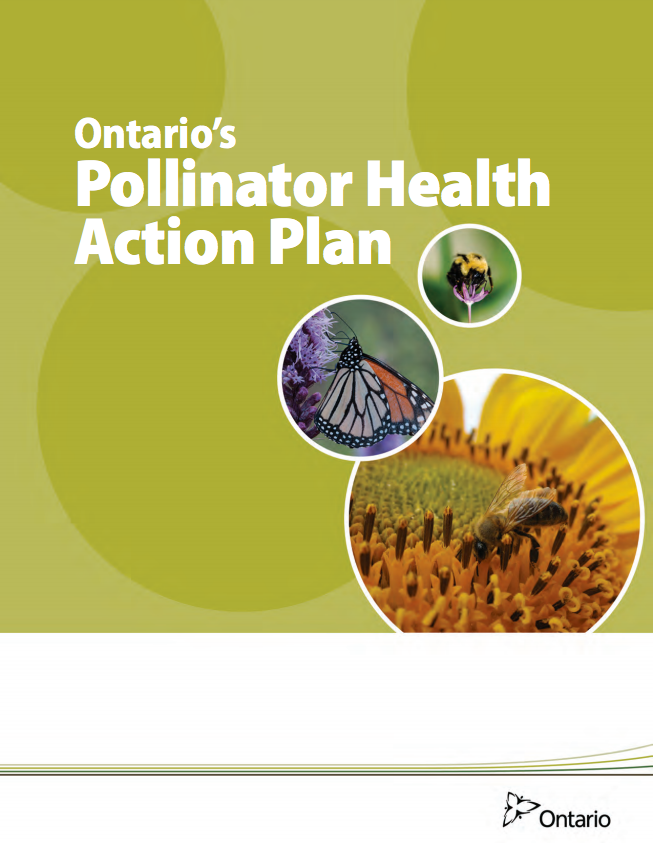Back to January 2017 Newsletter
Ontario's Pollinator Health Action Plan

Kim Fellows
Regular readers of this electronic bulletin realize that pollinators are in decline worldwide, due to a plethora of stressors that include pesticide exposure, climate change, reduced habitat and diseases and pests. One example of a wild pollinator in decline in North America is the rusty-patched bumble bee. It has been listed as an endangered species in Canada for the past seven years, and was just declared the same in the U.S. on January 10th, 2017. For readers wondering why we should care so much about pollinators, please read this article.
The province’s overall Pollinator Health Strategy is three-pronged, including the following components: 1) Production Insurance for Beekeepers; 2) Regulation to Reduce Neonicotinoid-Treated Seed; and, 3) the Pollinator Health Action Plan. The first two components have already been launched, and we reviewed the second component two years ago, in our January 2015 bulletin. The effort to reduce neonic-treated seed came into effect July 1, 2015, and its phase-in is ongoing, including this year’s growing season. You may recall that the goal of this component is to reduce, by 80%, the number of acres planted with neonic-treated soybean and corn seed. Ontario grows almost 2.5 million acres of both crops, producing 70% of all Canadian soybeans, and 68% of corn.
The vision is for Ontario to be home to healthy pollinator populations that contribute to a sustainable food supply and support resilient ecosystems and a strong economy. Strategic outcomes and goals are listed in the plan if you wish to read further.
What we really appreciate about the action plan is its collaborative nature. The plan builds on existing partnerships, intends to develop new ones and challenges all parties to participate in solutions with farmers: environmental organizations, conservation groups, academia, industry and communities — it even asks up to five other provincial ministries to cooperate.
The following actions are just a few amongst several, identified as part of the action plan:
-
A special research fund of $1 million will call for proposals that fill knowledge gaps related to pollinator health.
-
A digital awareness campaign will encourage Ontarians to plant pollinator-friendly gardens.
-
A target metric of one million acres of pollinator habitat to be restored, enhanced or created and protected.
Pollinator habitat is defined in the plan as, “… any area that provides nectar and pollen resources, nesting/overwintering sites or larval host plants that support populations of pollinators. Pollinator habitat can occur in natural areas as well as in agricultural and built-up settings.” The plan suggests enhancing urban gardens and parks, farm field margins and headlands, land alongside roadways or power lines.
This bulletin is reaching you across our beautiful country, and I encourage all citizens to act for pollinators, not just those in the most-populated province. Please visit our resources page to help you get started with your plans to plant pollinator-friendly spaces.
**
Kim Fellows is the coordinator of Pollination Canada.
Not yet a member?
An annual membership to Seeds of Diversity gives you access to our seed exchange, seed grow-out programs, and our online news.

We depend on donations to do our work.

Thank you for your support!
